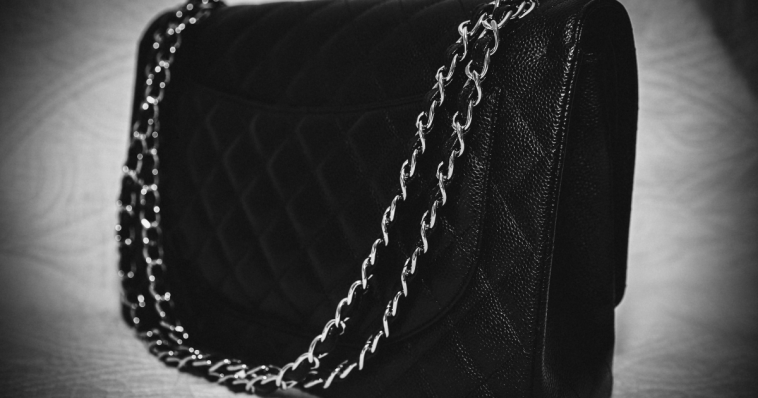Designer bags are more than just stylish accessories—they invest in quality and craftsmanship. With counterfeits becoming increasingly sophisticated, it’s crucial to verify authenticity. Look for top-notch hardware, accurate colors, premium materials, well-crafted tags, and authenticity labels. Ensure the serial number aligns with the brand’s standards. Use the brand’s official website as a reference to help you spot the real deal. By understanding these key features and choosing reputable sellers, you can confidently enjoy the luxury of an authentic designer bag.
Essential Tips for Checking If Your Designer Bags Are Authentic
In the past, getting to know authentic designer bags meant visiting their physical stores to see the products firsthand. However, nowadays, you can look them up online. With detailed photos and descriptions readily available, the internet offers a convenient way to become familiar with genuine designer bags without leaving your home.
Designer bags have official websites that showcase photos of their available handbags, which you can use as a trusted reference. By browsing these sites, you can familiarize yourself with the authentic details and features of the real deal. This makes it easier to compare them with any bag you’re considering buying, helping you spot any discrepancies that might indicate a fake.
1. Check the Clasps, Buttons, and Zippers
Authentic designer bags stand out for their high-quality hardware, including clasps, buttons, and zippers. Each piece is crafted with unique details that are hard to replicate. The hardware should feel solid, have a smooth finish, and work flawlessly, which are good signs of a genuine bag.
For example, Hermes bag zippers glide effortlessly and have a soft matte finish, unlike the cheap, shiny metal often seen on counterfeits. They also feature a distinctive “H” at the base. Chanel bags are another example, with each year bringing different zipper styles. If the zipper doesn’t match those on known authentic Chanel bags, it’s probably a fake.
2. Check the Color
Counterfeit designer bags often feature colors not found in genuine versions, even if the design seems similar. To verify authenticity, compare the bag’s color with images of the same design on the brand’s official site. If the colors don’t match, the bag is likely a fake.
3. Evaluate the Materials Used
Authentic designer bags are made from premium materials like coated canvas, genuine leather (often lambskin), or exotic skins. These materials are soft, flexible, and never sticky. In contrast, fake leather usually feels grainy and may have a chemical smell. Genuine designer bags maintain clear, undistorted prints despite their softness and flexibility.
Genuine designer bags are renowned for their sturdy construction. They usually feature hardware made from brass or gold and linings crafted from soft, lightly stained leather. High-quality stitching is crucial—authentic bags are handmade precisely so you won’t find loose threads or sloppy artistry. If a salesperson tries to brush off imperfections as “factory defects,” it’s a red flag that the bag might be counterfeit.
4. Examine Tags and Authenticity Labels
Authentic designer bags are crafted with great attention to detail, including the tags and authenticity labels. These are usually hand-stitched or stamped rather than just stickers and should be consistent throughout. Look at the font, stitching, and overall design when checking the tags. Suppose you see uneven stitching, mismatched fonts, or any irregularities. In that case, it’s a vital sign that the bag might be a fake. Minor errors, like misspelled brand names or descriptions, can indicate that you’re not looking at a genuine designer bag.
5. Verify the Serial Number
Checking the serial number is one of the most reliable ways to confirm if a designer bag is authentic. While you can’t always verify it online due to security measures, you can still assess its legitimacy. By familiarizing yourself with brand-specific details, you can decode serial numbers and see if they match the brand’s standards. This knowledge helps ensure that the bag you’re eyeing is from the designer.
Serial numbers can tell you the year a bag was made, and you can cross-check this with the records from luxury brands. For instance, from 1984 to 1986, Chanel bags usually had six-digit serial numbers, while more recent ones featured eight-digit numbers. These small details can be beneficial in confirming a bag’s authenticity.
If you come across a bag with a serial number that doesn’t match the brand’s usual format—like a Chanel bag with more than eight digits—it’s a vital sign it might be a fake. Understanding these details helps you make wise choices and avoid counterfeit products.
6. Inspect The Quality Of The Packaging
Packaging plays a significant role in a luxury brand‘s reputation. For genuine designer bags, the packaging is just as unique as the bag itself. It shows the brand’s dedication to quality. Each brand has unique packaging that helps you recognize it and adds to the overall luxury experience.
For example, Louis Vuitton‘s packaging is distinctive. It features high-quality “Safran Impérial” paper, a blue ribbon, and the Louis Vuitton logo etched on the boxes. Upon opening the package, a protective cloth bag also encases the product.
Another example is Hermes, known for its distinctive orange packaging with a ribbon and an etched brand logo. The products are also accessorized with a protective cloth bag and raincoat.
Where to Find Genuine Designer Bags
It’s no shocker that genuine designer bags come with a hefty expense tag compared to other brands. The craftsmanship and quality behind these bags drive their high cost. While preloved designer items can offer a more budget-friendly option, they still carry a significant price. So, suppose you stumble upon a so-called designer bag that’s surprisingly cheap. In that case, it’s likely not the real deal but rather a clever imitation.
Designer bags are crafted with exceptional attention to detail and materials, reflected in their price. If a bag is advertised as a designer but costs a fraction of the expected price, you’re probably looking at a replica rather than an authentic piece. It’s always wise to verify the bag’s authenticity to ensure you’re making a worthwhile investment.
Steer Clear of Flea Markets and Street Vendors
Avoid buying designer bags from flea markets or street vendors. These places sell secondhand items at lower prices but are not typically authorized to carry authentic luxury brands. While you might occasionally come across a genuine bag, it’s far more common to find counterfeit products in these settings. Luxury brands don’t usually authorize such markets, so shopping from reputable, authorized retailers is safer.
Shop with Trusted Sellers Only
Luxury department stores do not sell fake designer handbags to ensure customer satisfaction. In addition, the salespeople at these stores are knowledgeable about the luxury brands they carry, adding further legitimacy to their products. Luxury brands also authorize these stores to resell their products at a fixed price.
When shopping from online stores selling secondhand items, checking customer feedback is crucial. Reliable online retailers earn their reputation based on this feedback, and satisfied customers indicate the quality of these stores’ products. Choosing stores with a money-back guarantee is essential if the products don’t meet your expectations.
Pros of Investigating the Authenticity of a Designer Handbag
- Ensures Quality:
- Pro: Authentic designer handbags use high-quality materials and showcase superior craftsmanship.
- Verifying authenticity ensures you get a product that meets the brand’s standards.
- Protects Your Investment:
- Pro: Designer handbags often come with a hefty price tag. Ensuring authenticity protects your investment by confirming you’re spending money on a genuine item rather than a counterfeit.
- Preserves Resale Value:
- Pro: Authentic handbags retain their value better and are more desirable in the resale market. Verifying authenticity ensures the handbag’s long-term value and potential resale price.
- Avoids Legal Issues:
- Pro: Purchasing counterfeit goods can sometimes lead to legal trouble. Investigating authenticity helps you avoid inadvertently participating in illegal activities.
- Supports Ethical Practices:
- Pro: Counterfeit goods often involve unethical practices, including exploitation and poor working conditions. By buying authentic, you support fair labor practices and ethical production.
- Enhances Brand Integrity:
- Pro: Authenticity checks help maintain the brand’s reputation and integrity. Supporting genuine products contributes to the overall health of the fashion industry.
Cons of Investigating the Authenticity of a Designer Handbag
- Time-Consuming Process:
- Con: Verifying authenticity can be time-consuming, requiring research, consultations with experts, and possibly multiple steps to confirm the handbag’s legitimacy.
- Potential Additional Costs:
- Con: Sometimes, authenticity checks involve additional costs, such as fees for expert opinions or authentication services, which might add to the overall expense.
- Risk of Over-Analyzing:
- Con: There’s a risk of becoming overly cautious and missing out on legitimate opportunities. Over-analyzing details might lead to unnecessary stress or hesitation.
- Limited Expertise:
- Con: Only some can readily access reliable experts or resources to verify authenticity. This limitation can make the process more challenging for some buyers.
- Possibility of Misjudgment:
- Con: Even with thorough research, there’s a chance of misjudging a bag’s authenticity due to deceptive counterfeit designs or inadequate information.
- Emotional Stress:
- Con: The investigation process can be stressful, particularly if you’re passionate about the handbag or dealing with significant financial investment.
Invest in Genuine Designer Bags for Prestige and Value
It’s essential to verify the authenticity of designer bags in today’s market, where they are highly sought after but often copied. To ensure you’re investing in a genuine piece that reflects true craftsmanship and quality, familiarize yourself with the unique details of authentic bags and only shop from trusted sellers. Putting in the extra effort to verify the bag’s authenticity can save you from the disappointment of ending up with a counterfeit. Owning an authentic designer bag brings prestige and satisfaction and ensures your investment is well-protected.



